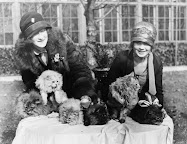The 17th Sydney Biennale is entitled ‘The Beauty of Distance: Songs of Survival in a Precarious Age’.
Liu Jianhua’s Container Series (2009), intrigued me from a distance, I saw vessels filled to the brim with blood I excitedly walked over and imagined my foot steps creating ripples in the pools, but as I drew closer I was struck calm by their stillness.
Yamaguchi Akira’s work combines the techniques and imagery of classical Japanese painting with contemporary urban realism. At first it is difficult to distinguish these works from the traditional paintings they draw on, by investing interest reveals the contemporary icons within the landscape.
Wang Qingsong’s photographic work Debacle (2009) has the characteristics of a modernist painting. The hand painted advertising posters cover an entire wall. The posters are faded pastels colours and the corrugated iron ripples add an extra texture.
Raqib Shaw’s painting The mild-eyed melancholy of the lotus eaters III (2009-10) draws in the viewer with its intense decoration and textile influences. So much, so that in fact this initially distracts the viewer from the actual imagery, the viewer is already invested within the painting when it reveals the imagery of highly erotised anthropomorphised animals and mythical creatures.
Louise Bourgeois ECHO (2007) is a suite of seven bronze sculptures which stand like tall desert birds, like many of the works seen in the biennale the encounter with these works tricks and transforms your perception several times. Once you realise they are cleverly considered and constructed items of clothing stretched and sewn together, you see the phallic and maternal themes the sculptures reveal their material and there literal strength can be admired.
Angela Ellsworth amazing sculptural creations represent pioneers women’s bonnets. The outer side of the bonnets display the decorative patterns made with pearls, closer examination exposes the other side of the bonnets reveal hundred’s and thousands of shape pins, transforming the bonnets into strangely beautiful but disturbing fetish-like objects.
Shirazeh Houshiary’s works oscillate and metamorphose. Her paintings are constructed by webbing words over the painted surface, resulting in kinetic, luminous surfaces. These undulating surfaces create optical illusions that capture the viewers gaze and reveal an illusiveness which I find extremely engaging.
Rachel Kneebone’s porcelain sculptures erupt like massive pavlova volcanos of contorted bodies, limbs and slumped phallic tendrils that emerge from amorphous properties of the material. Inspired by Ovid’s great poem ‘Metamorphosis’ where humans migrate into a myriad of forms, Kneebone depicts an erotic state of flux, suspended mid-transition, divulging part figurative and fragmentary motifs.
Gunnel Wåhlstrand paints on paper measuring more than 200 x 150 cm. Time-consuming, and with great precision. She paints mostly from photographs of her fathers early childhood. Through this process she is able to access a peaceful family time before her fathers suicide. The photographs where all taken by her grandfather, included interiors of the family home, the garden, and importantly her family members at ages she could never have know them. She herself has compared her method with the photographic development process, saying that her work is a way of creating memories.
Broadly speaking, what I get from these artists is a sense of enchantment; for me their works resonate an intelligent simplicity, laboured and controlled beyond any notion of function to engender a state of wonderment. These artists are each able to provoke a beauty through repetition, creating an engaging encounter that feels almost like a trick: each moment your perception of the work is corrected.



